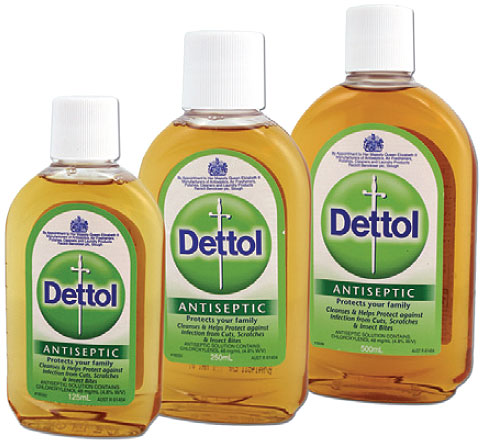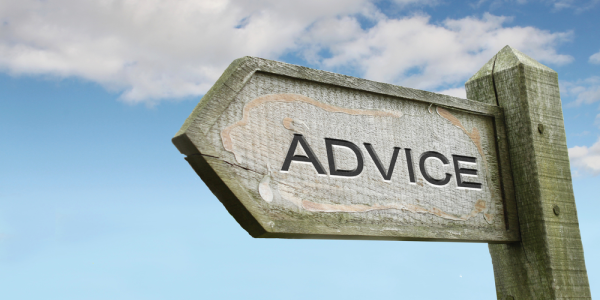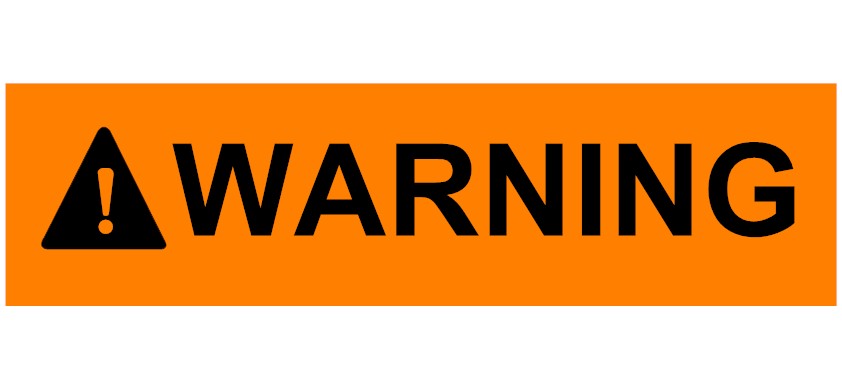[:en]
In general, aftercare is much more important than the way in which the aesthetic treatment is performed..
This not only applies to equipment that generates electric arcs, but also to lasers, cosmetic peels and other aesthetic treatments. This is simply because if the area is not kept clean, the likelihood of developing an infection increases. In this section, you will learn about the main points of aftercare, the type of antiseptic that will be used, the optional soothing treatments and warnings.
The Post treatment to any of the aesthetic treatments described in this website is very simple:
- Most importantly the area you treated must be kept clean in order to avoid infections until the part has recovered completely (i.e. the scabs have formed and fallen off by themselves or the peeling effect has ended). This occurs within 10 days from the aesthetic treatment. This alone will suffice as after-care. All other aftercare treatments are not strictly required as the body will naturally take care of the healing process.
- It is also important to avoid exposing the treated area directly to the sun for at least 2 to 3 months after the aesthetic procedures. Broad Spectrum Sun Screen must be applied every day on the area treated. Although the likelihood of hyperpigmentation is low cannot be completely eliminated and it is exacerbated by excessive sun exposure too early, even while using total sunscreen.
Aftercare main points.
After aesthetic treatments using lasers, electrical arcs, or professional cosmetic peels:
- Keep the area clean and avoid infections until the scabs have formed.
- If they form, do not pick the scabs and let them fall off by themselves. If the old skin layer is peeling off not to force it off on purpose.
- Do not apply any make-up (even mineral) until the scabbing or peeling effect has ended and /or any scabs which might have formed have fallen off by themselves.
- Do not apply any plasters on the treated areas as doing so can delay the natural healing process and increase the likelihood of undesired effects.
- Avoid sun exposure and wear broad-spectrum sunblock on the treated area. This has to be done after any scabs which might have formed, have fallen off by themselves. Please note that despite the fact that the appropriate sunblock has been worn direct exposure to intense light sources must be avoided in any case of 3 months after the last treatment.
The use of any flammable and alcohol-based antiseptics are strictly forbidden during the use of electrical arcing for aesthetic purposes, this is because flammable antiseptic can ignite during the treatment, therefore, causing various hazards. Also, the type of antiseptic used for the after-care has to be fit for purpose. Some antiseptics are too aggressive hence not suitable as after-care products after the use of electrical arcing for aesthetic purposes.

Why is it important to use antiseptics regularly after these treatments? Although the aesthetic treatment has been carried out correctly, and the area is virtually free from a real likelihood of infections at the time of the treatment, the area will be subject to atmospheric agents and in contact with non-sterile garments while recovering. While the client will have to make sure that all unnecessary infection hazards are avoided, some degree of contact with non-sterile objects or garments can sometimes be unavoidable. Therefore the treated area should be cleaned periodically with an appropriate antiseptic until the scabs will have formed.

Benzalkonium chloride solutions have been shown to be not only effective but leading to the best results if used appropriately. The recommended active ingredient in the antiseptic to be used for these types of aesthetic treatments is Benzalkonium chloride. Antiseptic solutions containing Benzalkonium Chloride are widely available on the market. The concentrations are usually between 0.17% to 0.2%. In the UK these types of antiseptics can be found at any chemist, the most common brand is Dettol Antiseptic Wash 0.198%. This products or equivalent custom solutions should be used to clean the treated area in the morning, early afternoon and evening before going to sleep. No other types of antiseptics should be used. If alcohol-based or other antiseptics are used then there could be some increased likelihood of undesired effects.
Wash the treated area twice a day, in the morning and before bedtime using the Benzalkonium Chloride solution. Increase the number of washes if necessary. Remember to dry very gently without rubbing the area, using a very clean towel (preferably sterile dressing). Do not apply occlusion using plasters of any type (do not bandage the area).

Apply the appropriate soothing product immediately after you have finished the treatment. Please note that the main application of the soothing products is eyelid tightening. This will minimise the perceived downtime by minimising the swelling.
For all other aesthetic applications of Voltaic Arcing, this is not strictly necessary and do not show any significant benefits. After all significant swelling only appears after eyelid tightening and not after the other aesthetic treatments possible with electrical arcing. For this reason, the use of soothing products should be avoided in all other aesthetic treatments and be only used for eyelid tightening. (If you have performed skin tightening, do not remove the carbon residues intentionally).

If infections are contracted soon after the treatment they could increase the likelihood of scarring.
Picking the scabs can cause scars and/or hypo-pigmentation.
The more the client is exposed to sunlight including other artificial light sources (even while wearing Broad Spectrum Sunblock) the higher the risks of hyper-pigmentation.
Wearing camouflage make-up or any other type of makeup before the area has recovered can result in delayed recovery, hypo-pigmentation and increase the risks of infections and hence scarring.
→ During the recovery period, while the scabbing is still to form, there is a general temptation of using cover up make up, or any makeup to resume the normal day to day activities immediately.
→ One of the main problems of makeup is the fact that makeup products are not meant to be sterile. Therefore the use of non-sterile products in an area that is still recovering from an aesthetic procedure will increase the likelihood of infections which may eventually result in scarring.
Do NOT apply any plasters to cover the treated area. Do not use antibiotic products as means of preventing infections. The use of antibiotic products as means of prevention is not recommended by the wider scientific community because it can increase future bacterial resistance. To not use any medicinal products during the aftercare unless prescribed by a medical practitioner.
The use of any type of aftercare products not recommended by Areton Ltd may not be fit for purpose, and hence increase the likelihood of undesired effects. Therefore if in doubt do not use any drugs, cosmetics healing balms etc.
Download Presentation on Aftercare – Click here →
[:es]
En general, el Post – tratamiento es mucho más importante que la forma en que se realiza el tratamiento estético..
Esto no solo se aplica al equipo que genera arcos eléctricos, sino también a los láseres, los peelings cosméticos y otros tratamientos estéticos. Esto es simplemente porque si el área no se mantiene limpia, la probabilidad de desarrollar una infección aumenta. En esta sección, aprenderá acerca de los principales puntos de atención posterior, el tipo de antiséptico que se usará, los tratamientos calmantes opcionales y las advertencias.
El Post tratamiento a cualquiera de los tratamientos estéticos descritos en este sitio web es muy simple:
- Lo más importante es que el área que trató debe mantenerse limpia para evitar infecciones hasta que la parte se haya recuperado por completo (es decir, las costras se hayan formado y caído por sí mismas o el efecto de pelado haya terminado). Esto ocurre dentro de los 10 días del tratamiento estético. Esto solo será suficiente como cuidado posterior.
- Todos los demás tratamientos posteriores al tratamiento no son estrictamente necesarios, ya que el cuerpo naturalmente se encargará del proceso de curación.
También es importante evitar exponer el área tratada directamente al sol durante al menos 2 a 3 meses después de los procedimientos estéticos. La pantalla solar de amplio espectro debe aplicarse todos los días en el área tratada. Aunque la probabilidad de hiperpigmentación es baja, no puede eliminarse por completo y se ve agravada por la exposición excesiva al sol demasiado pronto, incluso cuando se usa protector solar total.
Principales puntos del post tratamiento:
Después de los tratamientos estéticos con láser, arcos eléctricos o peelings cosméticas profesionales:
- Mantenga el área limpia y evite infecciones hasta que se formen las costras.
Si se forman, no coja las costras y deje que se caigan solas. Si la capa de piel vieja se despega, no la fuerce a propósito. - No aplique maquillaje (ni siquiera mineral) hasta que el efecto de costras o peeling haya terminado y / o las costras que podrían haberse formado se hayan caído por sí solas.
- No aplique ningún emplasto en las áreas tratadas, ya que hacerlo puede retrasar el proceso de curación natural y aumentar la probabilidad de efectos no deseados.
- Evite la exposición al sol y use bloqueador solar de amplio espectro en el área tratada.
- Esto debe hacerse después de que las costras que podrían haberse formado, se hayan caído por sí mismas. Tenga en cuenta que, a pesar del hecho de que se ha usado el protector solar adecuado, debe evitarse la exposición directa a fuentes de luz intensa en los 3 meses posteriores al último tratamiento.
El uso de cualquier antiséptico inflamable y a base de alcohol está estrictamente prohibido durante el uso del arco eléctrico con fines estéticos, esto se debe a que el antiséptico inflamable puede encenderse durante el tratamiento, por lo tanto, causando varios peligros. Además, el tipo de antiséptico usado para el cuidado posterior debe ser adecuado para su propósito. Algunos antisépticos son demasiado agresivos, por lo tanto, no son adecuados como productos de cuidado posterior después del uso del arco eléctrico con fines estéticos.

¿Por qué es importante usar antisépticos regularmente después de estos tratamientos? Aunque el tratamiento estético se ha realizado correctamente y el área está virtualmente libre de una probabilidad real de infecciones en el momento del tratamiento, el área estará sujeta a agentes atmosféricos y en contacto con prendas no estériles mientras se recupera. Si bien el cliente tendrá que asegurarse de evitar todos los peligros de infección innecesarios, a veces es inevitable cierto contacto con objetos o prendas no estériles. Por lo tanto, el área tratada debe limpiarse periódicamente con un antiséptico adecuado hasta que se formen las costras.

Se ha demostrado que las soluciones de cloruro de benzalconio no solo son efectivas, sino que también producen los mejores resultados si se usan de manera adecuada. El ingrediente activo recomendado en el antiséptico que se utilizará para estos tipos de tratamientos estéticos es el cloruro de benzalconio. Las soluciones antisépticas que contienen cloruro de benzalconio están ampliamente disponibles en el mercado. Las concentraciones suelen estar entre el 0,17% y el 0,2%. En el Reino Unido, estos tipos de antisépticos se pueden encontrar en cualquier farmacia, la marca más común es Dettol Antiseptic Wash 0.198%. Estos productos o soluciones personalizadas equivalentes deben usarse para limpiar el área tratada por la mañana, temprano por la tarde y por la noche antes de ir a dormir. No se deben usar otros tipos de antisépticos. Si se usan antisépticos a base de alcohol u otros, entonces podría haber un aumento en la probabilidad de efectos no deseados.
Lave el área tratada dos veces al día, por la mañana y antes de acostarse con la solución de cloruro de benzalconio. Aumente el número de lavados si es necesario. Recuerde secar muy suavemente sin frotar el área, utilizando una toalla muy limpia (preferiblemente un apósito estéril). No aplique oclusión con apósitos de ningún tipo (no vende el área).

Aplique el producto calmante adecuado inmediatamente después de haber terminado el tratamiento. Tenga en cuenta que la aplicación principal de los productos calmantes es el estiramiento de los párpados. Esto minimizará el tiempo de inactividad percibido al minimizar la hinchazón.
Para todas las demás aplicaciones estéticas de arco voltaico, esto no es estrictamente necesario y no muestra ningún beneficio significativo. Después de todo, la hinchazón significativa solo aparece después de apretar el párpado y no después de los otros tratamientos estéticos posibles con arco eléctrico. Por esta razón, el uso de productos calmantes debe evitarse en todos los demás tratamientos estéticos y solo debe usarse para apretar los párpados. (Si ha realizado un estiramiento de la piel, no retire los residuos de carbón intencionalmente).
Si las infecciones se contraen poco después del tratamiento, podrían aumentar la probabilidad de cicatrización.
Escoger las costras puede causar cicatrices y / o hipopigmentación.
Cuanto más expuesto esté el cliente a la luz solar, incluidas otras fuentes de luz artificial (incluso mientras usa el Bloqueador solar de amplio espectro), mayor será el riesgo de hiperpigmentación.
El uso de maquillaje de camuflaje o cualquier otro tipo de maquillaje antes de que el área se haya recuperado puede ocasionar una recuperación retardada, hipopigmentación y aumentar los riesgos de infecciones y, por lo tanto, cicatrización.
→ Durante el período de recuperación, mientras que la formación de costras aún está por formarse, existe la tentación general de usar un maquillaje para cubrir, o cualquier tipo de maquillaje para reanudar las actividades cotidianas normales de inmediato.
→ Uno de los principales problemas del maquillaje es el hecho de que los productos de maquillaje no están destinados a ser estériles. Por lo tanto, el uso de productos no estériles en un área que aún se está recuperando de un procedimiento estético aumentará la probabilidad de infecciones que eventualmente pueden resultar en cicatrices.
NO aplique ningún emplasto para cubrir el área tratada. No utilice productos antibióticos para prevenir infecciones. El uso de productos antibióticos como medios de prevención no está recomendado por la comunidad científica en general porque puede aumentar la resistencia bacteriana en el futuro. No usar ningún medicamento durante el postratamiento a menos que sea recetado por un médico.
El uso de cualquier tipo de productos de postratamiento no recomendados por Areton Ltd puede no ser adecuado para su propósito y, por lo tanto, aumentar la probabilidad de efectos no deseados. Por lo tanto, en caso de duda, no utilice ningún medicamento, cosméticos, bálsamos curativos, etc.
Descargar la presentación en Post tratamiento – Haga clic aquí →
[:]
